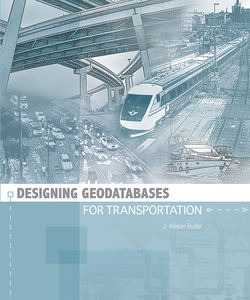Читать книгу Designing Geodatabases for Transportation - J. Allison Butler - Страница 46
Best practices in transportation geodatabase design
Оглавление• Accommodating multiple street names
• Designing a pavement management system
A transportation geodatabase is an abstract representation of the real world. Depending on the application, we may choose one of several possible abstractions. Whatever form is selected, the abstraction does not represent all the aspects of the real-world entities.
Figure 4.1 Abstraction Most geodatabases are a collection of feature classes with representational objects consisting of points, lines, and polygons. The abstraction process to produce a geodatabase often “loses something in the translation.” While retaining the full richness present in the real world is not possible, that is not the objective of abstraction. The true purpose is to focus on real-world aspects most critical to a particular problem. Different critical phenomena, abstractions, and attributes are needed for each problem to be solved.
The key to successfully creating a usable abstraction is to represent the core aspects of the entities. Most forms of abstraction in a geodatabase revolve around the many ways you could construct geometry showing the shape and location of real-world entities. For most transportation geodatabases, the linear aspect of roads, railroads, and waterways is dominant. However, a transport agency must also consider the property—the right-of-way—on which those facilities exist. Planning and constructing changes and routine maintenance all require information about facilities. A transport agency, therefore, will likely have multiple abstractions stored in separate databases.
This chapter describes the common forms of linear facility geometry and suggests best practices to help you decide which form is best for your application. A later chapter will show several ways you can manage multiple abstractions in a single geodatabase.
